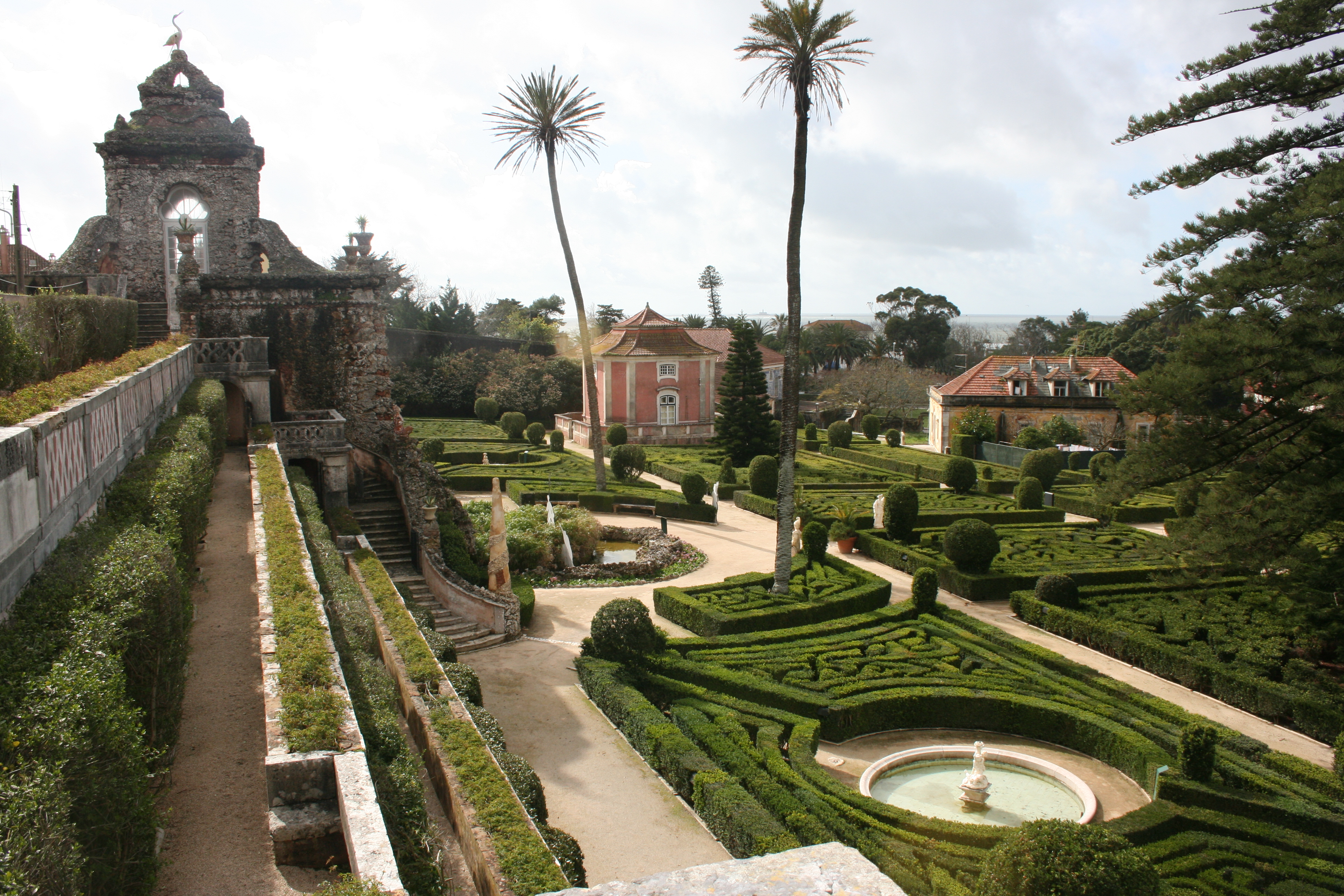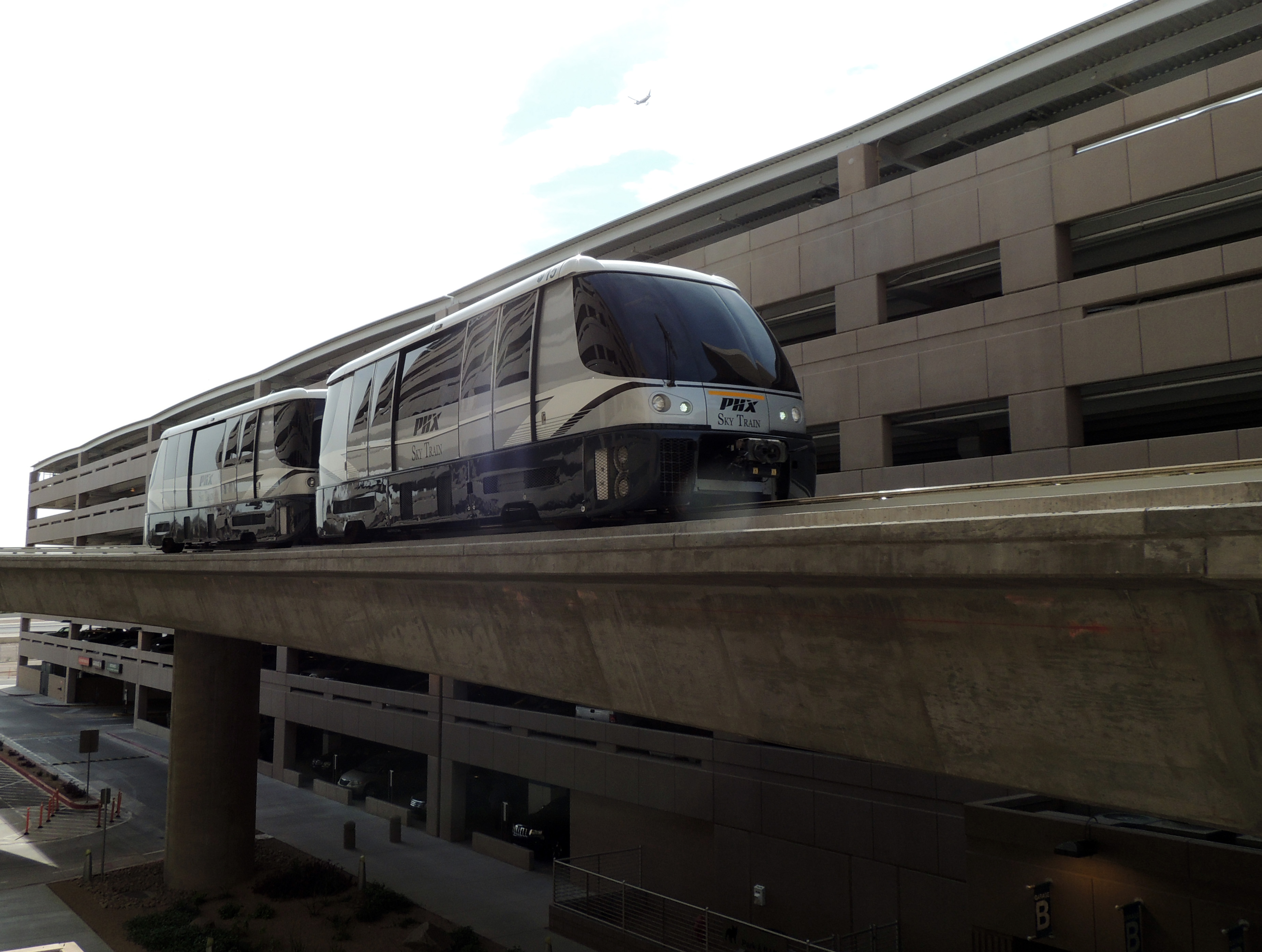|
SATUOeiras
SATUOeiras (Sistema Automático de Transporte Urbano de Oeiras), also known simply as SATU, was a elevated automated people mover that operated in Oeiras, Portugal, Oeiras, Portugal from 2004 to 2015. The line connected Paço de Arcos with Oeiras Parque Shopping Center and consisted of 3 stations and 2 cars. Discussions to possibly reopen and expand the line have been ongoing since 2017. History Oeiras is a satellite city, satellite community and commuter town approximately west of Lisbon. SATUOeiras was created as a partnership between Oeiras City Council and Teixeira Duarte with a 51% / 49% ownership structure respectively. Teixeira Duarte, whose headquarters are in Oeiras, was interested in providing better transportation for its employees and connecting its offices in Lagoas Park with the heavily-used Linha de Cascais, Cascais Line. Construction for SATUOeiras began in 2002 and the line opened on June 7, 2004 at cost of approximately 23 million Euros. Originally intend ... [...More Info...] [...Related Items...] OR: [Wikipedia] [Google] [Baidu] |
Oeiras, Portugal
Oeiras () is a town and concelho, municipality in the western part of Lisbon metropolitan area, located within the Portuguese Riviera, in continental Portugal. The municipality is part of the urban agglomeration of Lisbon and the town of Oeiras is about 16 km from Lisbon downtown. The population in 2011 was 172,120 living in an area of 45.88 km2, making the municipality the fifth-most densely populated in Portugal. Oeiras is an important economic hub, being one of the most highly developed municipalities of Portugal and Europe. It has the highest Gross domestic product, GDP per capita in the country, being also the second highest-ranking municipality (immediately after Lisbon) in terms of purchasing power as well as the second highest-ranking in the country as far as tax collection is concerned. These economic indicators also reflect the education level of its inhabitants, as Oeiras is the municipality with the highest concentration of population by List of countries by te ... [...More Info...] [...Related Items...] OR: [Wikipedia] [Google] [Baidu] |
People Mover
A people mover or automated people mover (APM) is a type of small-scale automated guideway transit system. The term is generally used only to describe systems serving relatively small areas such as airports, downtown districts or theme parks. The term was originally applied to three different systems, developed roughly at the same time. One was Skybus, an automated mass transit system prototyped by the Westinghouse Electric Corporation beginning in 1964. The second, alternately called the People Mover and Minirail, opened in Montreal at Expo 67. Finally the last, called PeopleMover or WEDway PeopleMover, was an attraction that was originally presented by Goodyear Tire and Rubber Company and that opened at Disneyland in 1967. The term "people mover" currently describes technologies such as monorail, rail tracks and maglev. Propulsion may involve conventional on-board electric motors, linear motors or cable traction. Generally speaking, larger APMs are referred to by oth ... [...More Info...] [...Related Items...] OR: [Wikipedia] [Google] [Baidu] |
Business Park
A business park or office park is a designated area of land in which many office buildings are grouped together. These types of developments are often located in suburban areas where land and building costs are more affordable, and are typically situated near major highways, roads, or train stations for easy access. Criticism While business parks can provide many benefits, such as providing employment opportunities and boosting the local economy, they can also have negative impacts on surrounding areas and communities. The impact of business parks on surrounding areas and communities has been criticized: *Large gaps between urbanized zones, increasing the suburban sprawl. *The appearance of the buildings. *Obsolescence, vacancy, and disrepair. To mitigate these negative effects, businesses and developers can take steps such as incorporating green spaces and sustainable design features into the business park, as well as maintaining and updating the buildings to prevent obsolesc ... [...More Info...] [...Related Items...] OR: [Wikipedia] [Google] [Baidu] |
Railway Lines In Portugal
Rail transport (also known as train transport) is a means of transport using wheeled vehicles running in tracks, which usually consist of two parallel steel rails. Rail transport is one of the two primary means of land transport, next to road transport. It is used for about 8% of passenger and freight transport globally, thanks to its energy efficiency and potentially high speed.Rolling stock on rails generally encounters lower frictional resistance than rubber-tyred road vehicles, allowing rail cars to be coupled into longer trains. Power is usually provided by diesel or electric locomotives. While railway transport is capital-intensive and less flexible than road transport, it can carry heavy loads of passengers and cargo with greater energy efficiency and safety. Precursors of railways driven by human or animal power have existed since antiquity, but modern rail transport began with the invention of the steam locomotive in the United Kingdom at the beginning of the 19th ... [...More Info...] [...Related Items...] OR: [Wikipedia] [Google] [Baidu] |
Lisboa Region
Lisbon Region () is one of the seven NUTS II designated regions of Portugal, which coincides with the NUTS III subregion Lisbon metropolitan area, Lisbon Metropolitan Area. The region covers an area of 3001.95 km2 (the smallest region on mainland Portugal) and includes a population of 2,815,851 inhabitants according to the 2011 census (the second most populated region in Portugal after the Norte Region, Portugal, Norte region), a density of 1039 inhabitants/km2. Considered as representing the Lisbon metropolitan area, Lisbon Metropolitan Region. It is a region of significant importance in industry (light and heavy), services, and it is highly urbanized. The gross domestic product (GDP) of the region was 73.3 billion euros in 2018, accounting for 36% of Portugal's economic output. GDP per capita adjusted for purchasing power was 30,200 euros or 100% of the EU27 average in the same year. The GDP per employee was 92% of the EU average. History Prior to 2002, the area was inclu ... [...More Info...] [...Related Items...] OR: [Wikipedia] [Google] [Baidu] |
Cable Car (railway)
A cable car (usually known as a cable tram outside North America) is a type of cable railway used for Public transport, mass transit in which rail cars are hauled by a continuously moving Wire rope, cable running at a constant speed. Individual cars stop and start by releasing and gripping this cable as required. Cable cars are distinct from funiculars, where the cars are permanently attached to the cable. History The first cable-operated railway to use a moving rope that could be picked up or released by a Cable grip, grip on the cars was the Fawdon Wagonway, a colliery railway line that opened in 1826. Another began operation in 1840: the London and Blackwall Railway, which hauled passengers in east London, England. The rope available at the time proved too susceptible to wear and the system was abandoned in favour of steam locomotives after eight years. In America, the first cable car installation in operation probably was the IRT Ninth Avenue Line, West Side and ... [...More Info...] [...Related Items...] OR: [Wikipedia] [Google] [Baidu] |
Linha De Sintra
Linha de Sintra is a railway line that connects the stations of Rossio and Sintra, Portugal. and is operated by Comboios de Portugal. History The railway, one of the first to be planned in Portugal, was opened on 2 April 1887. The southern terminus was changed from to , after the station was inaugurated in June 1891. The duplication works were completed on 20 January 1949, and during the 1950s, the line was electrified. New rolling stock was introduced in the 1990s. Quadruple-tracking between and had been completed by September 1999. See also * List of railway lines in Portugal * History of rail transport in Portugal References Sources * * Sintra Sintra (, ), officially the Town of Sintra (), is a town and municipality in the Greater Lisbon region of Portugal, located on the Portuguese Riviera. The population of the municipality in 2021 was 385,654, in an area of . Sintra is one of the ... Iberian-gauge railways Railway lines opened in 1887 Long stubs with sho ... [...More Info...] [...Related Items...] OR: [Wikipedia] [Google] [Baidu] |
Sintra
Sintra (, ), officially the Town of Sintra (), is a town and municipality in the Greater Lisbon region of Portugal, located on the Portuguese Riviera. The population of the municipality in 2021 was 385,654, in an area of . Sintra is one of the most urbanized and densely populated municipalities of Portugal. A major tourist destination famed for its picturesqueness, the municipality has several historic palaces, castles, scenic beaches, parks and gardens. The area includes the Sintra-Cascais Nature Park through which the Sintra Mountains run. The historic center of the ''Vila de Sintra'' is famous for its 19th-century Romanticist architecture, historic estates and villas, gardens, and royal palaces and castles, which resulted in the classification of the town as a UNESCO World Heritage Site. Sintra's landmarks include the medieval Castle of the Moors, the romanticist Pena National Palace and the Portuguese Renaissance Sintra National Palace. Sintra is one of the wealthi ... [...More Info...] [...Related Items...] OR: [Wikipedia] [Google] [Baidu] |
Agualva-Cacém
Agualva-Cacém () is a Portuguese city within the municipality of Sintra, in the Lisbon metropolitan area. It comprises the civil parishes of Agualva e Mira Sintra and Cacém e São Marcos, equivalent to 81,845 inhabitants of the municipalities population. History The toponym "Agualva" is derived from the Latin '' Aqua alba'', meaning white (pure) water, while "Cacém" is derived from the Arabic Arabic (, , or , ) is a Central Semitic languages, Central Semitic language of the Afroasiatic languages, Afroasiatic language family spoken primarily in the Arab world. The International Organization for Standardization (ISO) assigns lang ... '' Qāsim'' (قاسم), meaning "the one who distributes". The name ''Agualva-Cacém'' belonged to a civil parish that encompassed of the municipality of Sintra. On 12 July 2001, that parish was elevated to the status of city and divided into four civil parishes, which, in 2013, were then merged into two ''unions of parishes'': União da ... [...More Info...] [...Related Items...] OR: [Wikipedia] [Google] [Baidu] |
TagusPark
Taguspark is a science and technology park located in the municipality of Oeiras, Greater Lisbon subregion, Portugal. The Park covers an area of approximately 150 acres, and accommodates several research and development labs, innovative startups and business incubators in a range of fields such as information technologies (e.g. Portugal Telecom), telecommunications, electronics, materials, metrology, production, energy, environment, technical inspections and consultancy, biotechnologies and fine chemistry. It also has partnerships with leading university institutions like the Universidade Técnica de Lisboa (recently merged with the Universidade de Lisboa, keeping the name Universidade de Lisboa) and its engineering faculty - the Instituto Superior Técnico (IST) which has facilities in the park. Its current president is Professor Carmona Rodrigues. Furthermore, the park is home to the leading international school: International Sharing School - Taguspark acquired in 2018 by ... [...More Info...] [...Related Items...] OR: [Wikipedia] [Google] [Baidu] |







